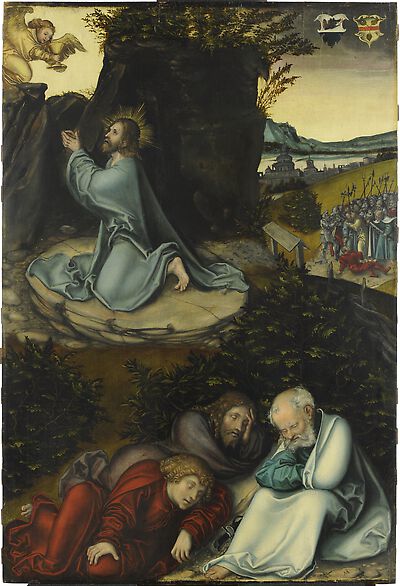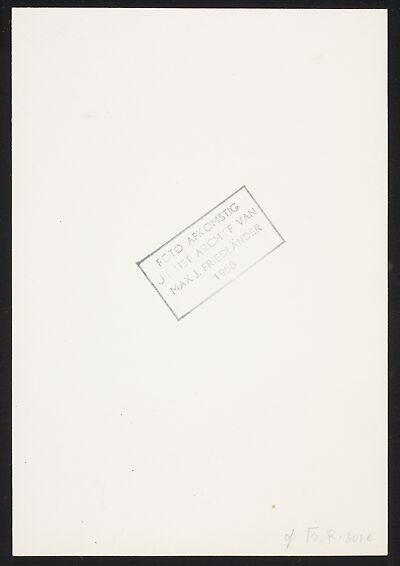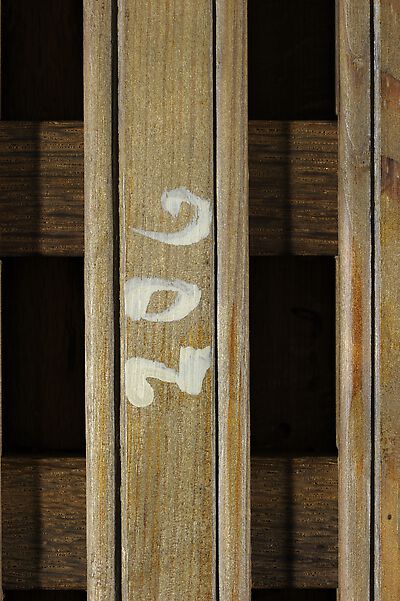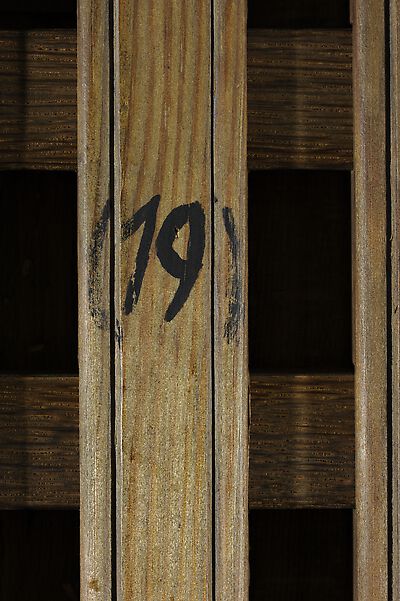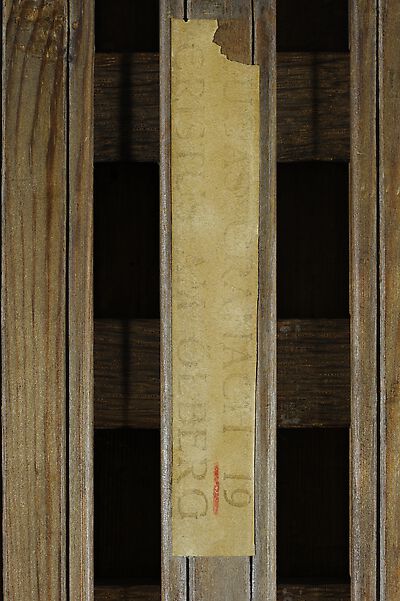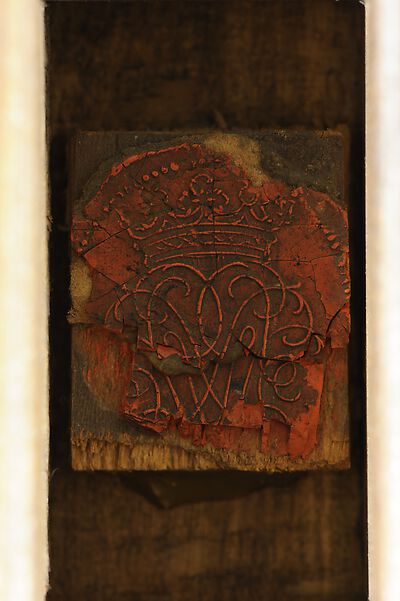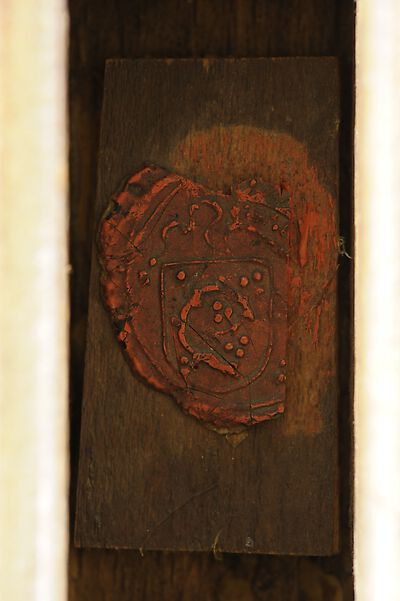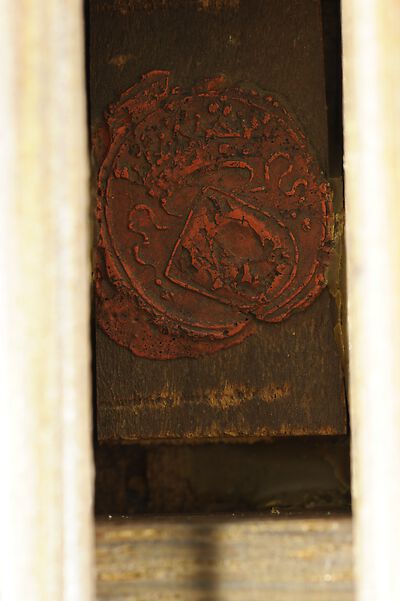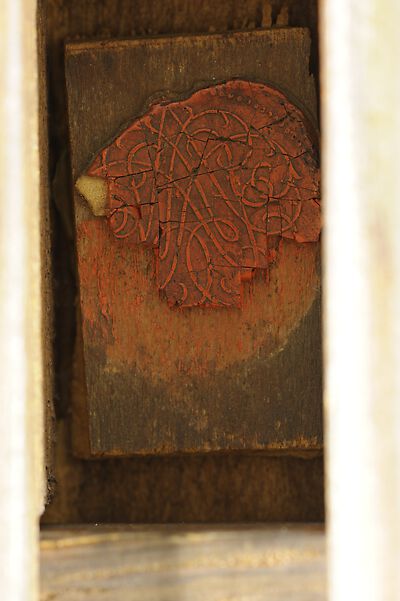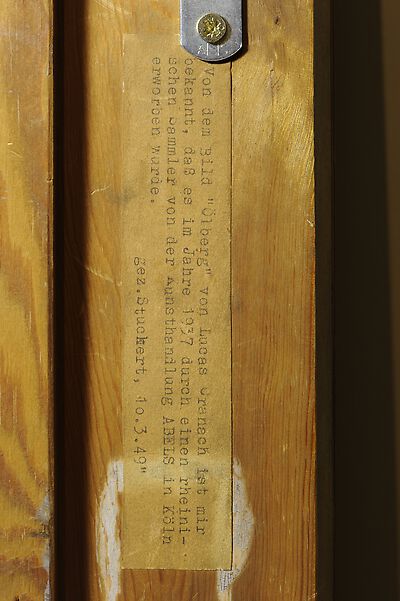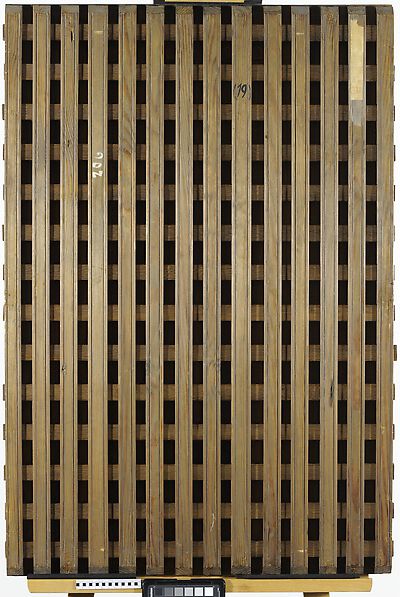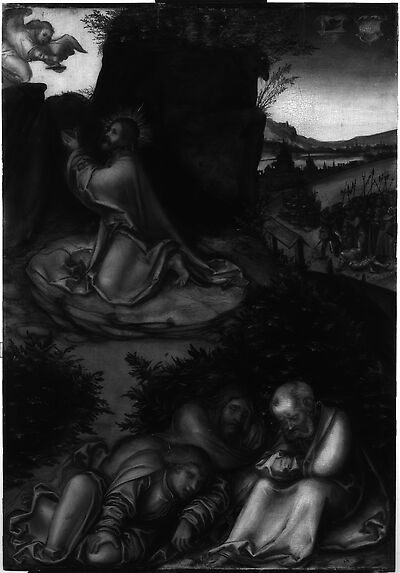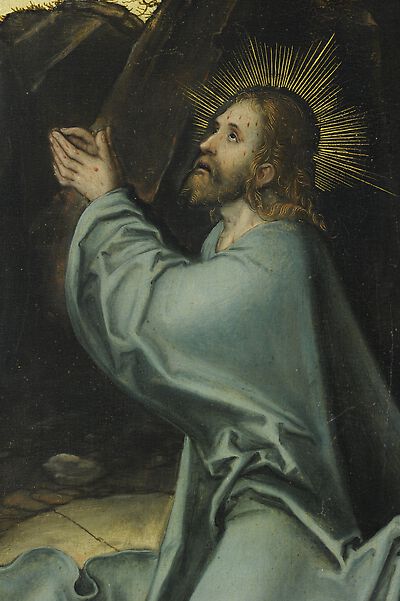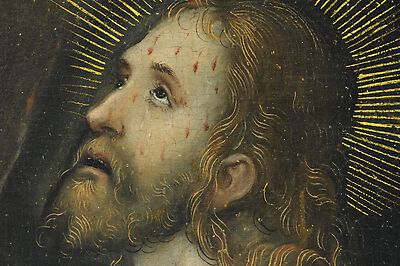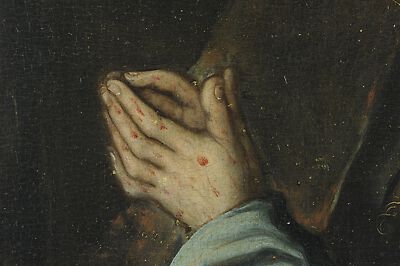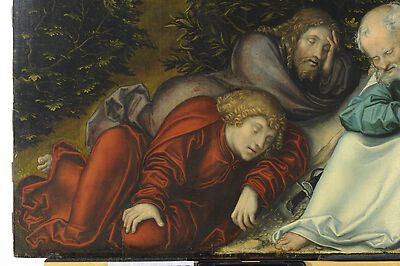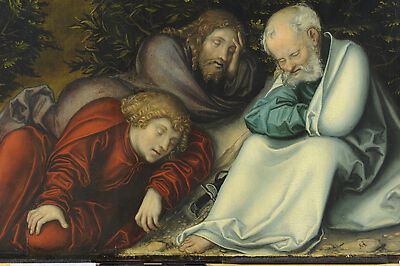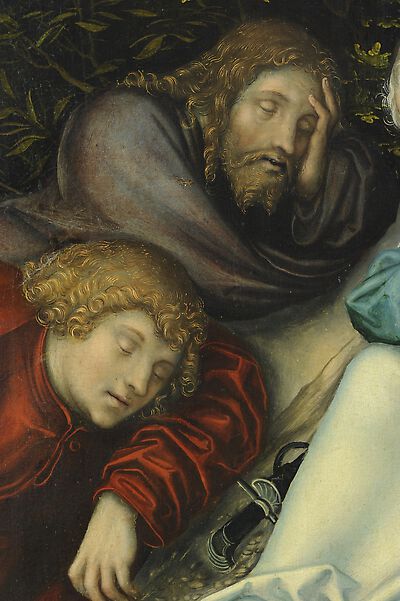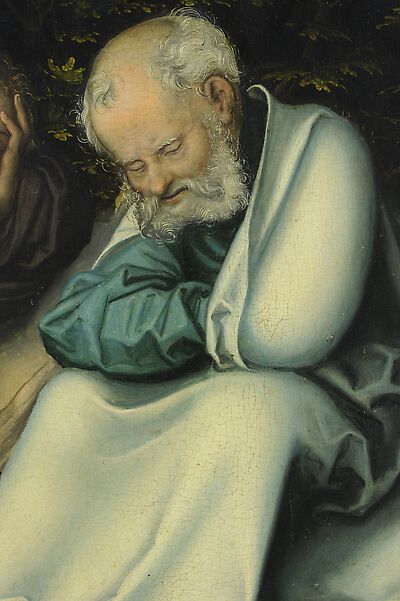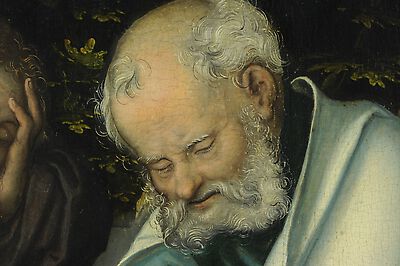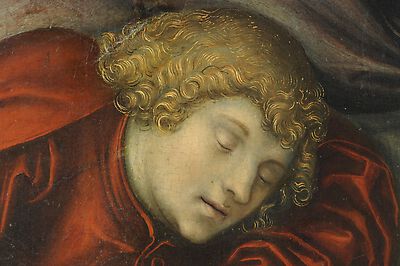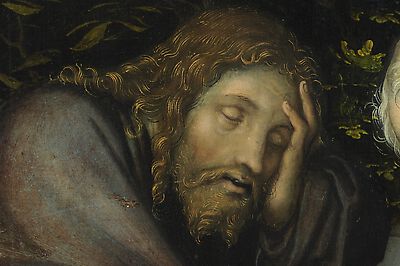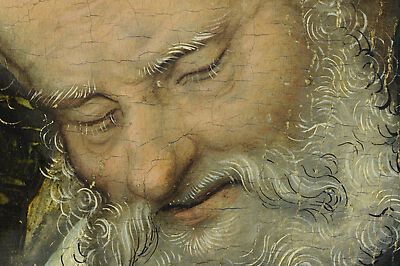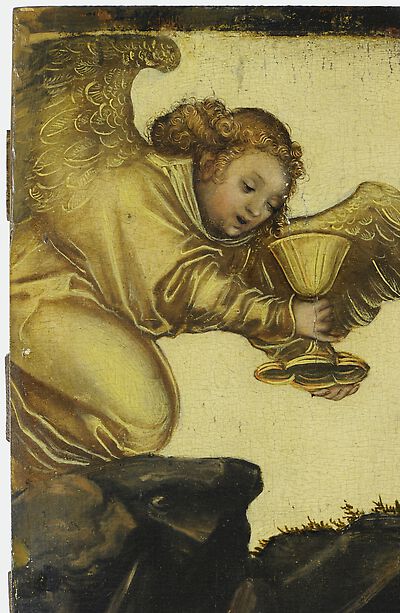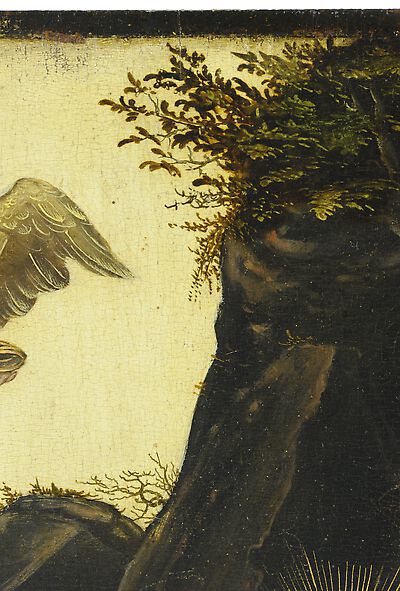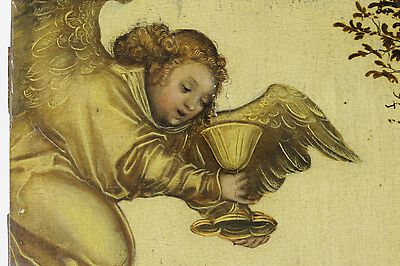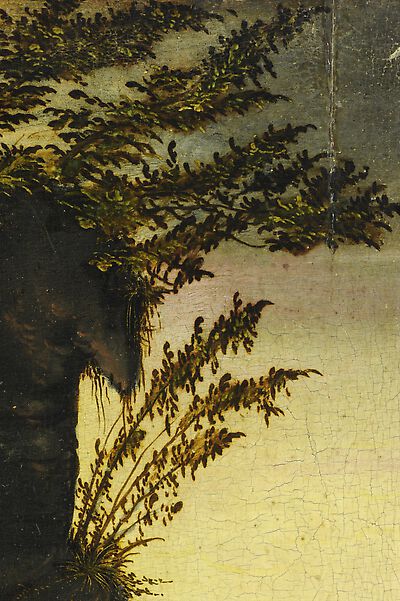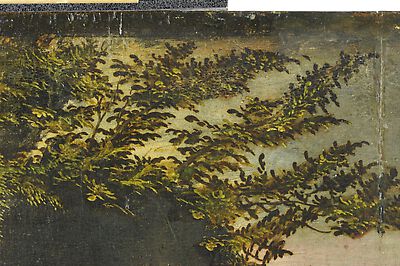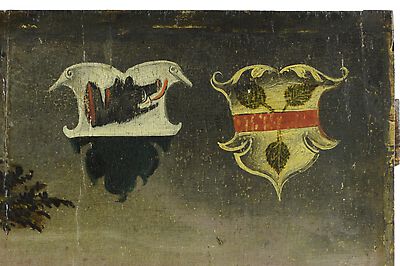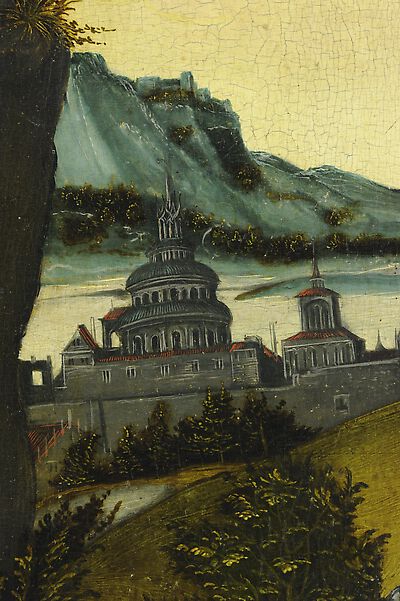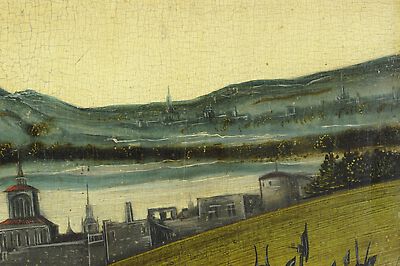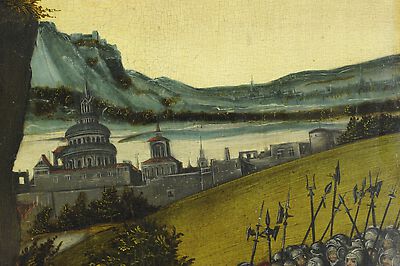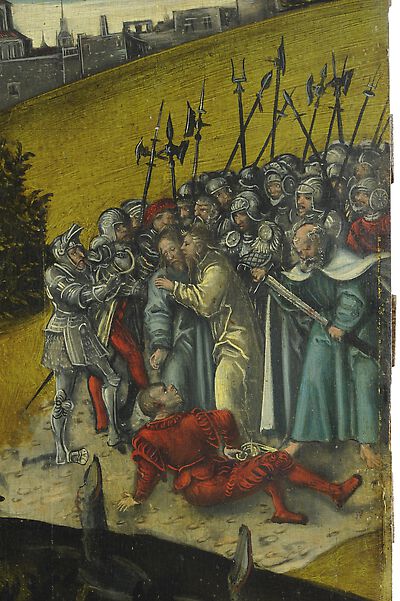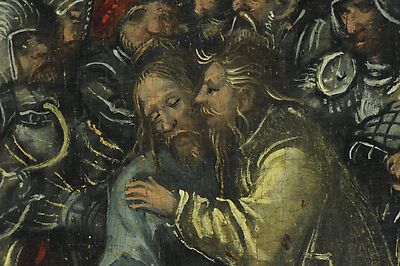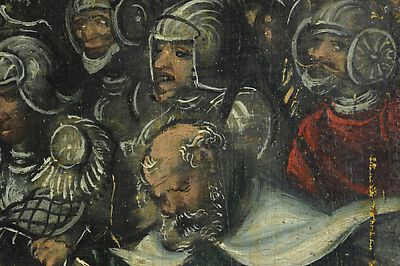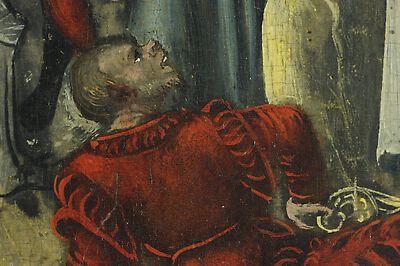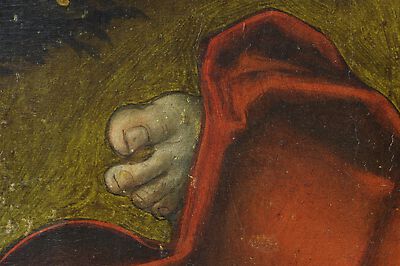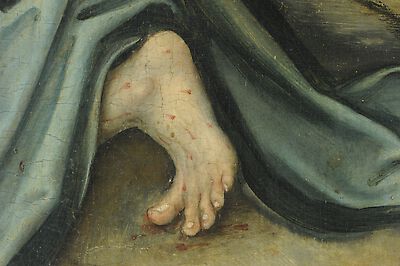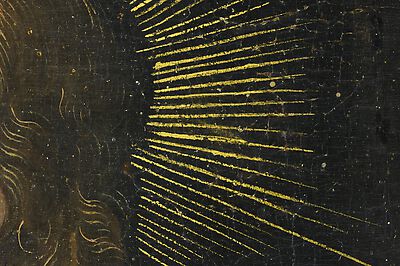Enveloped in a blue robe Christ kneels on a circular rocky plateau in the garden of Gethsemane awaiting the agony of the Passion. Full of fear he looks up to the left from where an angel descends with the very chalice, that Jesus refers to in Matthew 26, 42 when
Enveloped in a blue robe Christ kneels on a circular rocky plateau in the garden of Gethsemane awaiting the agony of the Passion. Full of fear he looks up to the left from where an angel descends with the very chalice, that Jesus refers to in Matthew 26, 42 when he asks his father if it could pass him by. The sleeping apostles occupy the foreground of the composition and are separated by a hedge. In addition to the youthful figure of St John dressed in red the grey haired figure of St Peter can be identified. In the background the subsequent scene of Christ¿s arrest is shown. Judas dressed in yellow betrays Christ to his pursuers with a kiss; while Peter cuts one of their ears off with his sword. The coats of arms of two donors are shown in the top right corner:
Left coat of arms: party per [horizontal] white and black, bear's head on white field Right coat of arms: yellow field with red horizontal band, three green leaves
[Görres, cda 2016]
- Attributions
-
Lucas Cranach the Elder (and workshop)
Lucas Cranach the Elder
Attributions
| Lucas Cranach the Elder (and workshop) | [Heydenreich, CDA 2011] [Exhib. Cat. Düsseldorf 2017, 187, No.92] |
| Lucas Cranach the Elder | [Friedländer 1937] |
- Production date
- about 1540
Production date
| about 1540 | Letter from M.J. Friedländer. Berlin, 24.VI.37 |
- Dimensions
- Dimensions of support: 86.5 x 58.5 x 0.5 cm (trimmed along the sides, thinned on the reverse)
Dimensions
Dimensions of support: 86.5 x 58.5 x 0.5 cm (trimmed along the sides, thinned on the reverse)
Dimensions including frame: 105.5 x 78.3 x 8 cm
[Heydenreich, cda 2011]
- Signature / Dating
Artist's insignia bottom right: winged serpent with dropped wings, facing left; in black paint
Signature / Dating
Artist's insignia bottom right: winged serpent with dropped wings, facing left; in black paint
- Inscriptions and Labels
Reverse of the panel on the cradle: in paint '206', '19'; label: 'Lucas Cranach, 19, Christus am Ölberg'
- 4 seals …
Inscriptions and Labels
Stamps, Seals, Labels:
Reverse of the panel on the cradle: in paint '206', '19'; label: 'Lucas Cranach, 19, Christus am Ölberg'
- 4 seals that were presumably originally on the reverse of the panel before it was thinned. They are now mounted on wooden disks, which have been attached to the reverse of the panel (see photograph)
Reverse of the frame:
label: 'F. G. Conzen, No. 1724, Rahmenfabrik Düsseldorf'; written in pen: '1724', '2407'; in paint: '(19)'; label with inscription: 'Von diesem Bild 'Ölberg' von Lucas Cranach ist mir bekannt, dass es im Jahre 1937 durch einen rheinischen Sammler von der Kunsthandlung ABELS in Köln erworben wurde. Gez. Stuckert , 10.03.49'
- a further label with an illegible inscription and two further imprints from other labels
[Heydenreich, CDA 2011]
- Owner
- The City of Düsseldorf
- Repository
- Museum Kunstpalast, Düsseldorf
- Location
- Düsseldorf
- CDA ID
- DE_SMKP_M206
- FR (1978) Nr.
- FR376C
- Persistent Link
- https://lucascranach.org/en/DE_SMKP_M206/
- 4 seals …
